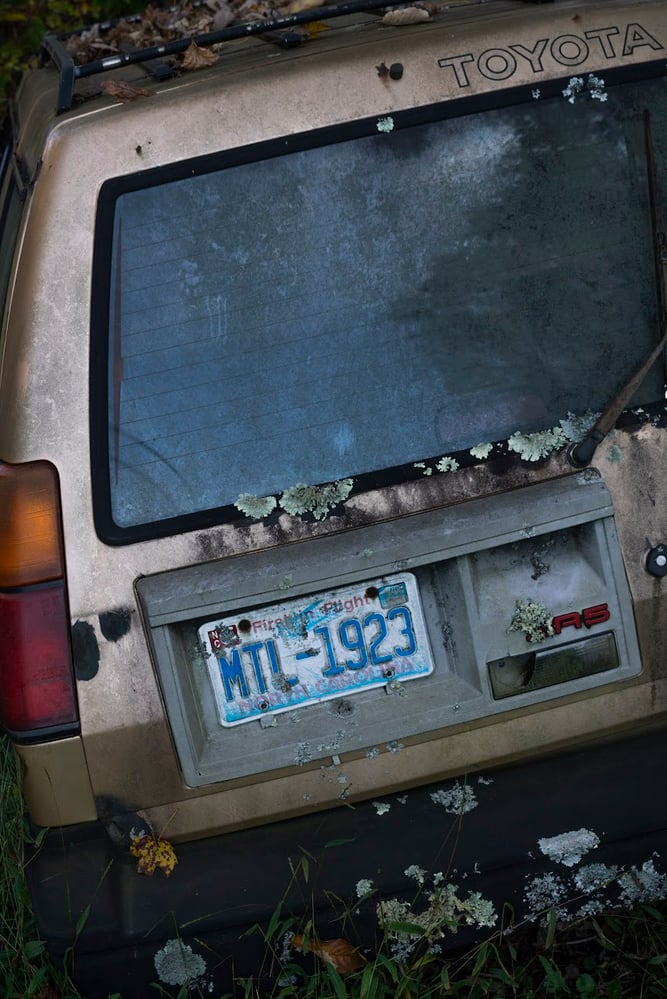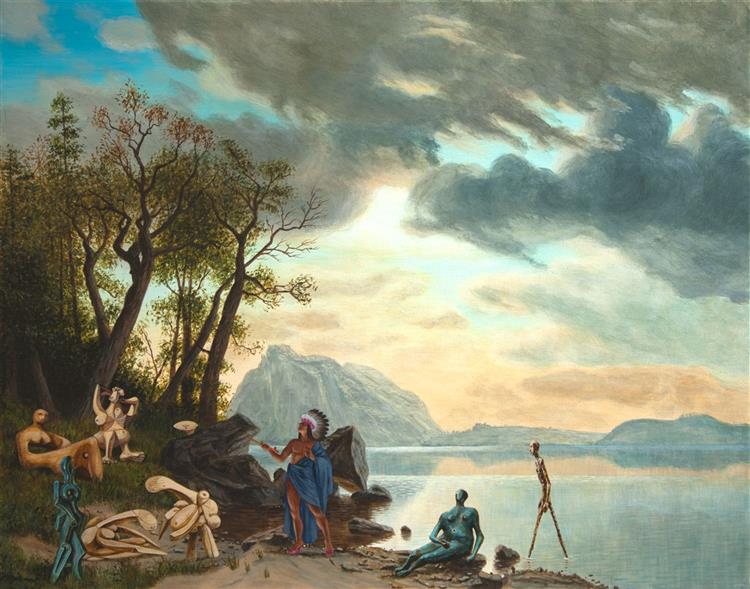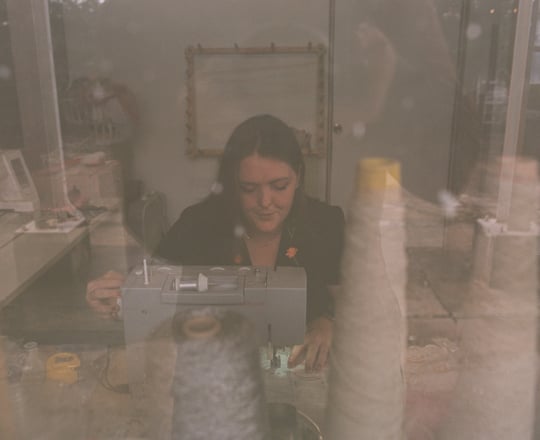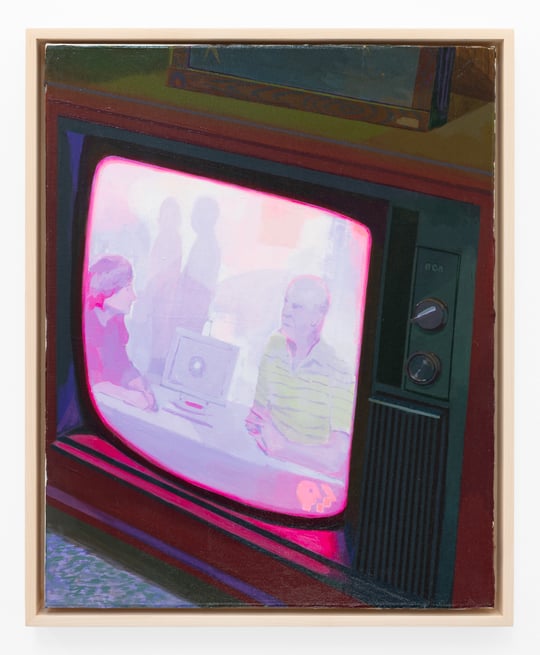
They kissed like the world was ending, but really, wasn’t it already over, and perhaps within the kiss lay the new beginning?
Gabriel Castilloux Calderón[1]
In 1940, a flood ended railroad service in Boone, North Carolina. One could say that the creation of the railroad, which was originally built in 1919 to transport lumber shipments to the Appalachian town, laid the groundwork for its inevitable demise. In the aftermath of deforestation, the high country’s landscape gave way to a record rainfall that caused landslides throughout the area. In and around Boone, this deadly disaster is known as “The Great Flood.”
The town would recover. The land near the railroad’s path became Rivers Street, which now runs through Watauga County’s largest employer, Appalachian State University. By focusing on the growing tourism in the area, Boone realized a transition to alternative income that many mining- and resource-dependent regions of southern Appalachia have not been able to achieve.
After upheaval, people find ways to survive.
—
In ecology, there is an increasing focus on species that survive in ecosystems disrupted by change. They are described as “ruderal,” a term derived from the Latin word for rubble and coined after World War II, as scientists in Berlin witnessed new species sprouting up out of the ruins of their bombed city.
Since then, postwar capitalism has driven human activity into a frenzy and disrupted the planet’s ecology like never before. Known as the “Great Acceleration,” this growth also bore the uncertainty and volatility that mark the environmental and political climate of the twenty-first century . To echo anthropologist Anna Lowenhaupt Tsing, “What if precarity is the condition of our time?”[2]

Fellow academic Donna Haraway has suggested that we name this environmental epoch after colonization’s impact as a racial and political history—the “Plantationocene”[3]—rather than by the act of our general species, as in the term Anthropocene. In that vein, Tsing’s work investigates the disruptive, chaotic results of capitalism’s activity. In particular, her book The Mushroom at the End of the World: On the Possibility of Life in Capitalist Ruins studies the people and ecological connections of environments already on the other side of extreme disturbances such as wildfires, deforestation, and war. Note here, “disturbance is always in the middle of things: the term does not refer us to a harmonious state before disturbance.”[4]
In ecology, Tsing explains, disturbances are constant, and they can be ordinary. They may allow for the growth of life or the destruction of it. Landscapes themselves are created by the disturbances of growing trees, spreading fungi, and human activity, and that process of disturbance “realigns possibilities for transformative encounter.”[5] In precarious times, Tsing’s work reminds us that this planet has always been transforming along disruptions, and that disturbances can reveal new potentials for living with one another—plants, animals, and humans alike.
When weeds grow in the rubble, they beg the question: How is community fostered when society fails us?
—
“How To Survive the Apocalypse for Native Girls” is the title of a fictional guide written by the young Anishinaabe Two-Spirit protagonist of Kai Minosh Pyle’s short story of the same name. In a future where borders and money have lost their meaning, Pyle’s main character has to grapple with her tribe’s decision to cut off medical assistance to outsiders. Ultimately it is connection to an outsider, a queer mentor that inspires her to leave the tribe in an act of rebellion and solidarity. “Precarity,” as Tsing writes, “is an acknowledgement of our vulnerability to others.” In the real world, the isolation of the current economy is what allows people to fantasize that we each survive alone, even though we all encounter and depend on others and our ecology. Pyle’s story identifies interconnection as the key to survival after systems collapse, emulating the long-standing commitment of Native people to bridge human practices within the nonhuman world. Out of necessity, these communities have been remaking and reimagining worlds in the wake of colonization.

“And I know now that the only way to survive the apocalypse is to make your own world. So let’s get started.”
“How to Survive the Apocalypse for Native Girls”[6]
Pyle’s story is included in Love after the End, an anthology of queer Two-Spirit fiction that demonstrates the ways in which queer Indigenous communities employ speculative fiction to explore ways of life and love in the wake of society’s collapse. “[Indigenous authors are] kind of like the Mad Max experts of how to survive the apocalypse—we’ve been doing it since 1492,” says anthology editor Joshua Whitehead. “We’ve already lived dystopia. We’ve already lived through multiple apocalypses. What do we do now?”[7]
These stories don’t necessarily find a better tomorrow, but their authors surface new possibilities for communal care and queer intimacy against a surrealist landscape. These ruderal fictions are interested in the interconnection of the human and the nonhuman in the wake of disruption, and their writers use storytelling to fashion a future in which queer Indigenous communities bloom amidst human entanglements with political ecologies.
—
Prior to European contact, western North Carolina was a seasonal hunting and gathering ground for Moneton, S’atsoyaha (Yuchi), and ᏣᎳᎫᏪᏘᏱ Tsalaguwetiyi (Cherokee East) people for thousands of years. Periodic weather shifts impacted human settlement in the area, varying human use over time. After English colonizers arrived on the land, and the U.S. Army, along with state militia forces, forced thousands of Indigenous folks out of North Carolina via the Trail of Tears, the land became a mix of cheap land for lower class settlers: clear-cut for lumber, hunted for pelts, and mined for coal. During this era of colonization in the Plantationocene, scaling the economy to capitalism’s demands required the repression of Indigenous ecological systems and sacrificed the interdependence that made southern Appalachia one of the most biodiverse areas on the continent. Two hundred years later after Europeans arrived in the area constituting Boone, the Linville River Railway was built and later transformed the land to fit capitalism’s progress narrative.

In his short story “History of the New World,” author Adam Garnet Jones reflects on the impact of world’s European colonization and the modern demand to challenge the Plantationocene by telling a new story. In Jones’s narrative, Em, a Two-Spirit nehiyow, and Thorah, a Liberal atheist, are torn about whether they can raise their daughter, Asêciwan, on Earth, as it has slowly fallen into an unrecognizable and hostile climate. They’re a family “sleepwalking through a twilight time, after the unchecked human explosion, and before whatever came next.”[8] When a new planet, miraculously similar to Earth, is discovered, they buy tickets to move there—right before it’s announced that sentient life already exists on this “New World.” Em’s understanding of colonization and its impacts sets the whole plan in jeopardy. They are faced with a choice: Will they cross dimensions or join the Nagweyaab Anishinaabek Camp, or Rainbow People’s Camp, and attempt to recultivate Earth? In Tsing’s words, the characters are confronted with a “world-making decision”: they can colonize another planet or work through disturbances to cultivate a sustainable, ruderal ecology at home.
Like those featured in Love after the End, queer and marginalized perspectives are by necessity finding entangled possibilities for life when standard systems fail. This wayfinding will be necessary for all people if we want to navigate an era of precarious climate and political-economic volatility. Ruderal understandings of ecology and culture reveal the damage of historical events whilst inviting new relationships to be created in the ruins.
—
In 2020, the COVID-19 pandemic kept the street traffic on Rivers Street in Boone to a minimum, stripping the economy of its students and tourists. This road’s connection to the global economy helped bring a virus that halted its own use: a destruction brought by creation.

What future disturbances will be felt in Appalachia? What new transformations will alter this land again? What will force us to live differently?
Today’s white, privileged residents of Appalachia can learn the long histories of disturbances in the American South and imagine a different future beyond the failure of the capitalist progress narrative. We also can imagine stories after the end of times, like so many have already been forced to do. What is a climate apocalypse to the Indigenous people who have faced genocide and were prohibited from living in the Appalachian highlands? What is the end of times for extinct species built over? What is neglect to those living in former coal towns, already long abandoned and desperate for a decent living? What is a failed state for enslaved people or trans people or someone living on the streets?
In the failures of capitalism, the lives and stories of those outside its recognition have already become ruderal: growing in and through the rubble of disruption.
Both Tsing and the authors of Love after the End find hope and possibility in examples of world-building, mined from history, ecology, and fiction. As Tsing writes, “If we are interested in livability, impermanence and emergence,” then we must pay attention to what and who creates our disturbed landscapes. These groups “coalesce, change, and dissolve: this is the story.”

[1] Gabriel Castilloux Calderón, “Andwànikàdjigan,” in Love after the End, ed. Joshua Whitehead (Vancouver: Arsenal Pulp Press, 2020), 109.
[2] Anna Lowenhaupt Tsing, The Mushroom at the End of the World: On the Possibility of Life in Capitalist Ruins (Princeton, N.J.: Princeton University Press, 2015).
[3] Donna Haraway, Noboru Ishikawa, Scott F. Gilbert, Kenneth Olwig, Anna L. Tsing, and Nils Bubandt, “Anthropologists Are Talking—About the Anthropocene,” Ethnos: Journal of Anthropology 81, no. 3 (November 2015): 535–64.
[4] Tsing, The Mushroom at the End of the World, 274.
[5] Tsing, The Mushroom at the End of the World, 261.
[6] Kai Minosh Pyle, “How To Survive the Apocalypse for Native Girls,” in Love after the End, 77-94.
[7] “Listen: Joshua Whitehead talks about Love after the End on CBC’s The Next Chapter,” Arsenal Pulp Press, September 25, 2022, https://arsenalpulp.com/News/2021/LISTEN-Joshua-Whitehead-talks-about-Love-after-the-Endon-CBC-s-The-Next-Chapter.
[8] Adam Garnet Jones, “History of the New World,” in Love after the End, 58.




